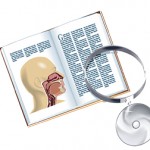 TRIO Best Practice articles are brief, structured reviews designed to provide the busy clinician with a handy outline and reference for day-to-day clinical decision making. The ENTtoday summaries below include the Background and Best Practice sections of the original article. View the complete Laryngoscope articles free of charge.
TRIO Best Practice articles are brief, structured reviews designed to provide the busy clinician with a handy outline and reference for day-to-day clinical decision making. The ENTtoday summaries below include the Background and Best Practice sections of the original article. View the complete Laryngoscope articles free of charge.
Explore This Issue
March 2016Background
Within the aging population, the incidence of vocal disorders is estimated to be between 12% and 35%. In a series reported by Davids et al., 25% of patients older than age 65 years presenting with a voice complaint were found to have vocal fold atrophy (presbylarynges), where the hallmark physical signs are vocal fold bowing with an increased glottic gap and prominent vocal processes. The epithelial and lamina propria covering of the vocal folds begin to exhibit changes due to aging. In older adults, the collagen of the vocal folds lose their “wicker basket” type of organization, which leads to more disarrayed segments throughout all the layers of the lamina propria, and there is also a loss of hyaluronic acid and elastic fibers. With this loss of the viscoelastic properties and subsequent vocal fold thinning, along with thyroarytenoid muscle atrophy, this leads to the classic bowed membranous vocal fold. Physiologically, these anatomical changes to the vocal folds leads to incomplete glottal closure, air escape, changes in vocal fold tension, altered fundamental frequency, and decreased vocal endurance. Women’s voices will often become lower pitched initially and then gradually higher pitched and shrill, whereas older men’s voices will gradually become more high pitched as the vocal folds lengthen to try and achieve approximation.
Best Practice
Voice therapy, injection laryngoplasty, and bilateral medialization thyroplasty are all appropriate choices for treatment of the aging voice, as all have demonstrated improvement in patient quality of life. There are no studies to date that examine these options in a head-to-head manner, so trying to draw conclusions as to which option is the best is rather challenging. It appears that most practitioners take the approach of starting conservatively with voice therapy, and if patients do not achieve the improved results they desire, then advancing to bilateral IL is a next best step. This is a low-risk, temporary procedure that can serve as a trial to demonstrate benefit and to help guide the patient in choosing a more permanent procedure such as bilateral MT. Some patients may choose to be injected repeatedly for benefit so as not to undergo a more involved procedure such as MT. Medialization thyroplasty remains the definitive procedure when the other therapies do not provide the hoped-for improvement in vocal quality of life desired by a patient. Although all three of these treatment modalities have demonstrated success in treatment of the aging voice, it is also important to remember that many older patients are simply looking for reassurance that their vocal changes do not point to more serious pathologies such as malignancy. (Laryngoscope. 2014;124:2439-2440).